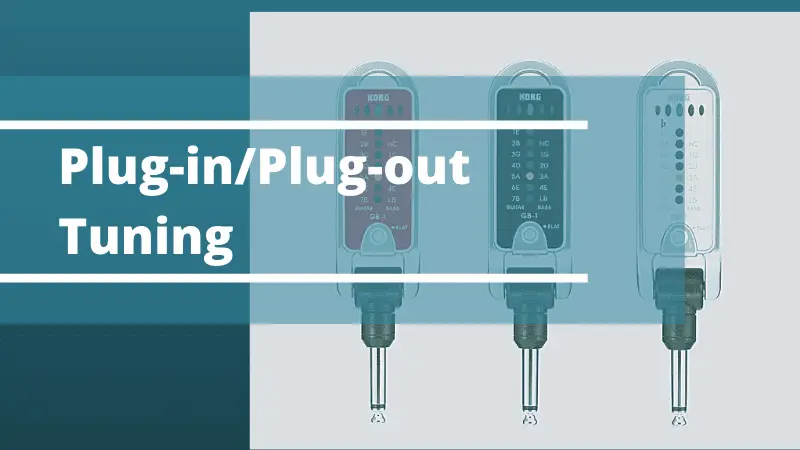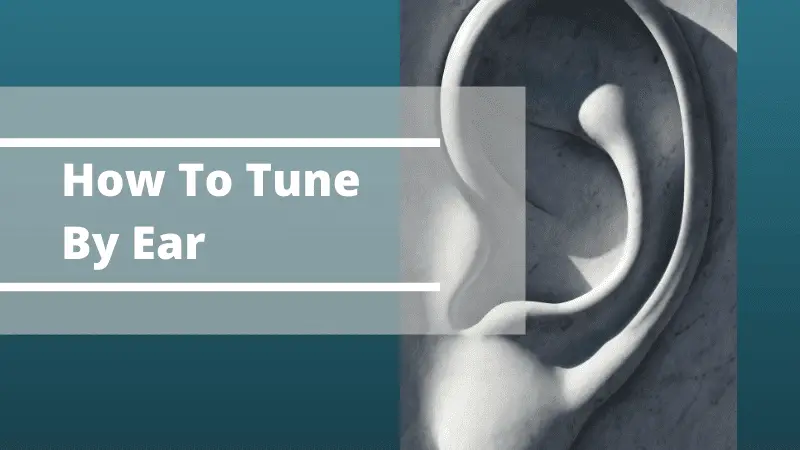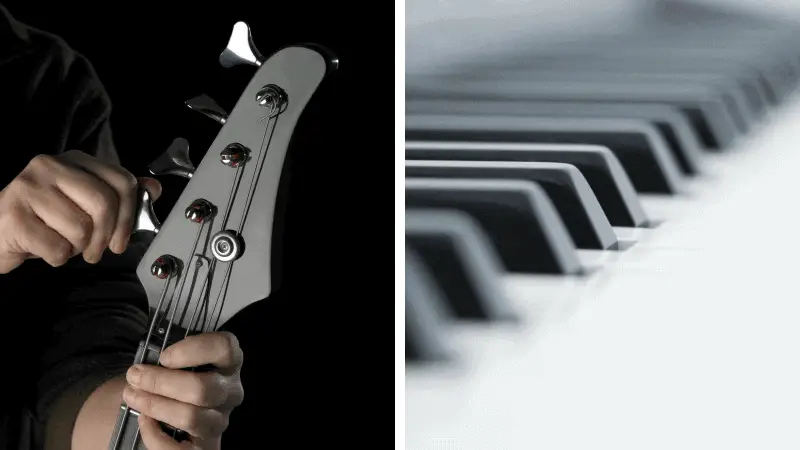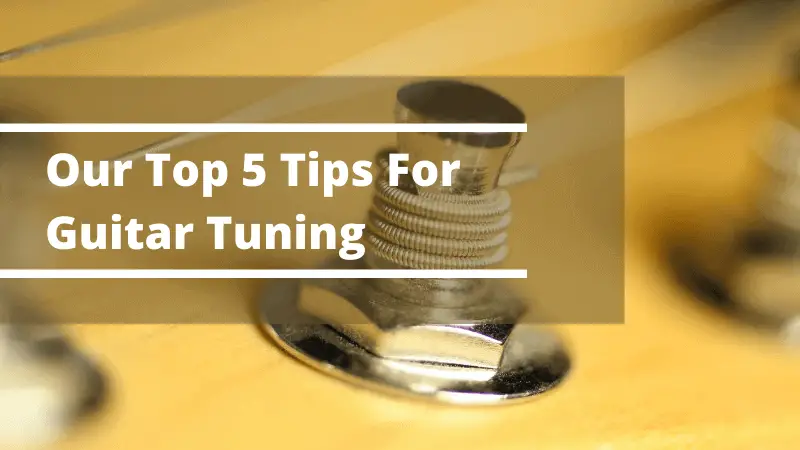Learn nine different approaches to tuning a guitar in this ‘How To Tune A Guitar’ guide plus we include our top 5 tips of guitar tuning as a bonus for you!
In the meantime, don't forget to unlock a world of unlimited sound with Amazon Music Unlimited, where over 100 million songs wait at your fingertips. Whether you're working, relaxing, or fueling your creativity, the right track is always just one tap away. Elevate every moment with music that moves you.
Guitar tuning can be hard work or can be a piece of cake depending on how much knowledge you have about a guitar. The most basic question people ask after getting their hands on a guitar is how to tune a guitar.
Read Also
- Best Acoustic Guitars Under 100
- Best Acoustic Guitars Under 200
- Best Acoustic Guitars Under 300
- Best High-End Acoustic Guitars
- Best Electric Guitars Under 200
- Best Electric Guitars Under 300
- Best Electric Guitars Under 500
- Best Bass Guitars Under 200
- Best Bass Guitars Under 500
- Best Bass Guitars Under 1000
Well, let’s just say we have put up all the necessary information that a beginner needs, and also if you consider yourself a guitar tuning pro, you might as well learn some new techniques because this article is full of different approaches about how to tune a guitar.
So, let’s get busy.
Introduction To Guitar Tuning
Tuning a guitar is the first basic step in the case of playing the guitar. When you buy a guitar, be it an acoustic, bass, or electric one, it’s obviously in tune because the shop keeps it tuned for you in the first place. But over the course of time and due to playing the guitar frequently or non-frequently, the strings are bound to get either loosened or tightened.
That’s where tuning comes in. As this article is basically a beginner’s guide, we will only show you the standard tuning option.
Yes, there are ways you can tune your guitar but let’s start with the ideal one to learn.
First of all, you can tune a guitar with or without the help of a tuner, clip-on, plugin, or even smartphone apps these days. But there was also a time when professional guitar players used only their sense of sound to tune the guitar. Still, many professionals prefer to tune their guitars without the help of tuners. But to make things easier, we will follow the easy process and get ourselves a tuner or download a tuner app for our smartphone.
The smartphone should have a perfectly working microphone so that it can catch the sounds accurately. Otherwise, the guitar won’t be appropriately tuned.
How To Tune Your Guitar?

In standard tuning, the optimum sound we’re looking for is 440hz. We can achieve that simply by twisting the tuning peg.
First, let’s get a tuner or download any tuner app that has a good review from your play store or app store.
The process is very simple. You turn the tuner on and strum the strings. The tuner will tell you which string or strings are out of tune. All you have to do is either tighten or loosen the strings with the help of the tuning peg.
It’s an easy process. All you have to do is make sure that you’re not putting too much force on the tuning peg. It might be the reason behind a string tearing.
There are many methods that you can find out if your question is how to tune a guitar. There are vibration-based methods, microphone-based methods, plugin/plug-out methods, pedal methods, etc. Not all the methods are beginner worthy, but some are actually ones you can use. So, we will discuss the methods that are more likely suitable for newbies and beginners.
The question that still remains is how will you know when the string is completely tuned. Most tuners either have a needle or a bar and some advanced tuners have a 2D depiction of your guitar fret.

Mostly, the needle should show the center, the bar should be green, and the fret should show that the strings are absolutely straight.
That’s how you will know that the tuning is perfect.
Method 1: Vibration-based tuning

Vibration-based tuning is not as complicated as it sounds. You see each string works like a tuning fork itself that vibrates at a certain level which produced the perfect sound.
So, you can actually check the vibration a string produces and tune your guitar without breaking a sweat. The basic tuning tactics are either tightening or loosening the strings. You calculate the vibration using a clip-on tuner that you place on the top head of your guitar and play each string till the clip-on tuner shows each string vibrating at the correct pitch.
It’s really easy. Also, many professional guitarists prefer that the vibration tuner is much better than the sound-based tuners.
Method 2: Microphone Based tuning

Microphone-based tunings the name suggests that you have to capture the sound each string produces to understand whether it’s tuned or not. In tune and not in tune, the guitar makes different sounds. A tuner that is, in fact, microphone based, is already preloaded with the sound scheme that a guitar will produce when it’s in tune.
And, also, it will show exactly how much you have to tighten or loosen the guitar to make sure it’s in tune. Mostly, smartphone apps are sound-based tuners. You can download any good app that has a good review going on and get yourself a microphone-based tuner.
Method 3: Plug-in/Plug-out tuning

Most guitars nowadays have a plugin option where you can plug in your guitar to a guitar console or a speaker and play your guitar louder. So, to give you better live performance compatibility while plugged into a speaker or a console, there is now a plugin tuner that you can directly plug into the jack and tune your guitar.
Most people don’t prefer this option only because it costs more than a usual vibration tuner and smartphone tuner apps are free.
Those tuning options don’t require any sort of plugging in. That’s considered plug-out tuning.
Method 4: Pedal-based tuning

Pedal-based tuning is solely for electric guitars. Pedal tuners are a bit complicated to understand at first. But when you become a professional and start rocking an electric guitar on stage, that’s where the pedal tuners show up. Mostly pedal tuners are now considered a must-have accessory for professionals because many songs require a variety of tuning while playing the song.
So, it’s not possible to tune in between a song with other measures. So, the pedal tuner just lies by the feet of the guitarist, and they can pedal and change tuning when necessary.
Method 5: How To Tune Without A Tuner?

There are times for any guitar player that we may not find a tuning device nearby. But thanks to our smartphones and the internet, we don’t have to worry about that anymore. But still, you might end up being at a place where you might have to tune your guitar without a tuner.
So, we have to rely on the natural tuner, our ears. Most guitar players, over the course of time, develop the sense to understand what is the correct standard tune for every string according to the sound.
As a beginner, you can’t really expect yourself to start tuning your guitar like a pro guitarist. No, sir. You have to go a long way before catching all the correct sounds in your ears and memorizing them.
Method 6: How To Tune By Ear?

Ear tuning requires years of practice. It’s the natural tuner that God has provided you with. But to be exactly honest, you really don’t have to be a pro and learn all the sounds to understand whether your guitar is fully tuned or not.
There’s always a way out for everyone if how to tune a guitar is your concern. You have to use the 5th fret. There’s a specific and very well-celebrated formula that everyone applies as a beginner when they are learning how to tune a guitar.
Method 7: The 5th Fret Formula
First, pluck the 6th string while holding the 5th fret and then the open 5th string, if they sound close then your guitar is in tune. That means to tune the 5th string, all you have to do is make sure the open 5th string sounds the same as the 5th fret of the 6th string while plucking. Note here that the 5th fret of the 6th string and the open 5th string is the A note in standard tuning.
Then, comes the second step. Now that your 5th string is in tune follow the same process: pluck the 5th fret of the 5th string with the open 4th string. If they sound the same, the 4th string should be tuned. Otherwise, you have to tighten or loosen the string a bit and then try again.
The sound should be the sound of a D note in standard tuning.

Now, you should understand how this formula works. When the 4th is tuned, you follow the same process on the third string and compare the sound of the 4th string 5th fret with the open 3rd string. The note should be a G note in standard tuning.
Now here’s the twist.
If you apply this same formula to tune the 2nd string, it won’t work because the notes of the 5th fret 3rd string, and open 2nd string are not the same. In this case, you’ve to pluck the 4th fret of the 3rd string with the open 2nd string to tune your 2nd string properly. The note should be a B note in standard tuning.
That being said, we have come to our last step- tuning the 1st string (the high E). Tuning the 1st string is not an exception like tuning the 2nd string. In this case, you have to follow the exact same formula as you’ve followed in tuning the rest of your strings.
The sound should be the sound of an E note but the high one.
In these five easy, simple steps, you can tune your guitar most appropriately.
Remember, the 6th string has to be in tune for you to apply the formula. Otherwise, it’s not possible to tune the guitar with this formula.
Method 8: How To Tune Your Guitar Using Other Instruments?

Now here’s a very cool thing. You can tune your guitar precisely with the help of another instrument. It’s quite an unorthodox method. Most people don’t even know about this, but still, it is a method. We only advise people to do this when they have mastered playing the guitar.
This type of tuning is a great practice for improving the knowledge of notes. You can tune your guitar and also learn how to understand the notes better by ear.
All you need is a piano to tune a guitar. A guitar has six strings hence six notes while playing open. Now, a piano has a lot of keys and 6 of them precisely match the tuning of the six strings of the guitar. To tune your guitar with the help of a piano, all you have to do is match the notes with the designated piano notes.
Again, it’s not an easy task, and we don’t give it as advice to beginners no matter if you own a piano or not. You can try this for fun. In case, you own a piano, we have featured an article that might help you a lot with cleaning your piano keys in the safest ways.
Annoying Tuning Problem
The most common and annoying tuning problem is getting a ‘tink’ sound from the strings and the tuning going wild. This happens when the string gets caught in the headstock’s groove.
There’s a simple and easy solution to that. All you have to do is lubricate the groove using a pencil lead.
Let’s get you through the process. First, sharpen the pencil and color the grooves of the nuts so that you can lubricate them with graphite lead.
If this doesn’t work, use sandpaper to smooth out the nuts in the grooves.
More Guitar Tuning Problems & Solutions
Still Not Tuned?
There are several issues regarding a guitar that might cause problems while tuning. If the guitar has no manufacturing issues, it should tune perfectly.
But sometimes new and old guitars face a problem called intonation.
Intonation is usually a problem that you can identify yourself with, but you need professional help to solve the problem.
If your guitar is not getting tuned or getting out of tune too often, you should check for intonation. How to do that?
Method 9: The 12th Fret
The 12th fret gets you by the intonation situation. If your guitar is not getting in tune, you have to check for intonation. Hold on to each note on your guitar’s 12th fret and strum.
The 12th fret, if tuned with the standard process, all the strings should have the same sound only an octave apart.
If it’s not proper and you can hear an irregularity in the sound, your guitar has an intonation problem.
Now, not always need a professional to help you. If you own an electric guitar, you might as well check YouTube.
But if you’re on an acoustic guitar, it is suggested that you should get professional help. Note that ukulele tuning is far easy than tuning a guitar as it has only 4 strings and you wouldn’t need professional help normally to tune a ukulele.
The process is similar though. Know more not only about ukulele tuning but also about ukulele history, basics, tips and tricks, and a lot more!
Our Top 5 Tips for Guitar Tuning

Knowing how to tune a guitar is not enough. Now that you know how to tune a guitar, there are some other responsibilities that you have to take charge of. These are some tips from our end that will help you to play your guitar better.
You should know this question “How to tune a guitar?” is asked by a person when they actually want to play their guitar better.
These tips will surely make your guitar skills better. You’ll be able to achieve your goal. Let’s start:
- Tune Every Time Before Playing: We tune our guitar to make the sounds better. Every time we are about to play our guitar, we expect the best sounds. And that’s why it’s necessary to tune the guitar every time before you start playing.
- Keep It In A Balanced Temperature: High temperature makes the strings loosen, and low temperature makes the strings tighten. So, the guitar should be kept at an optimum temperature that keeps your guitar in tune as much as possible.
- Loosen The Strings When You’re Not Playing: Loosening the strings a bit after playing is a very bold move. Because too much strain can harm the quality of the strings of your guitar. It eventually affects your sound no matter how much you try to tune perfectly later on.
- Try To Avoid Any Kind of Impact: Any bodily impact on the guitar can create a vibration that substantially causes the guitar strings to wear off or get out of tune. So, beware of this. Try not to bang your guitar anywhere.
- Replace Old Strings With New Strings Regularly: We wait for our guitar strings to tear off before we even plan about replacing them. But there’s a deadline for everything. So, we should keep that in mind, check if there’s any potential damage on any of the strings on a regular basis, and change if we can spot any.
Final Words
So, now you know how to tune a guitar with nine different approaches. Also, with the help of these tips, you will be able to keep your guitar in better shape for a longer time. Lastly, the only thing you can do to be a better guitarist is, of course, practice.
So, just keep playing. Everything will get easier with practice!
As an Amazon Associate, Cleanestor earns from qualifying purchases at no additional cost to you.

